Astilbe, known for its feathery plumes and lush foliage, is a beloved choice for many gardeners. Its versatility and ease of care make it a popular addition to garden beds and borders. In this guide, we will explore everything you need to know about Astilbe, including its care, planting methods, popular varieties, and tips for enhancing your garden with this beautiful plant. Our gardening blog is a perfect place to find any information you need!
Understanding Astilbe
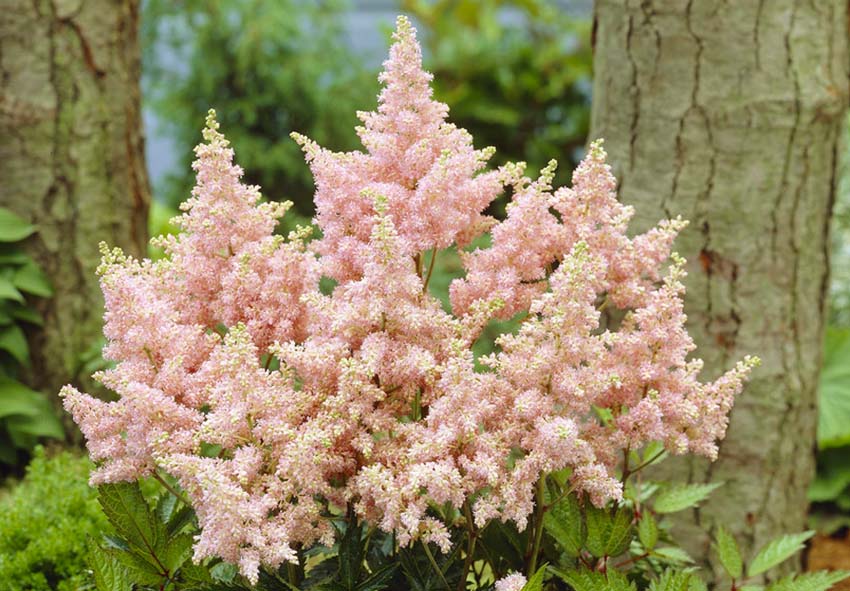
Astilbe, with its feathery plumes and lush foliage, is a popular perennial known for its ability to thrive in shaded garden settings. Understanding its unique characteristics and growing requirements is essential for cultivating these elegant plants in your garden.
What is Astilbe?
Astilbe is a perennial plant known for its vibrant, feathery flowers and fern-like leaves. It thrives in shady areas and brings color and texture to garden spaces where many other plants might struggle.
Popular Varieties of Astilbe
There are numerous species and hybrids of Astilbe, each with its own unique characteristics. Popular varieties include:
| Variety | Color | Flowering Period | Fragrance | Particularities |
| ‘Bridal Veil’ | White | Early to mid-summer | Fragrant | Tall, feathery plumes; drought tolerant |
| ‘Fanal’ | Deep Red | Mid to late summer | Non-fragrant | Compact growth; suitable for borders |
| ‘Peach Blossom’ | Light Pink | Late spring to summer | Non-fragrant | Soft pink blooms; spreads gradually |
| ‘Rheinland’ | Pink | Mid to late summer | Non-fragrant | Compact growth; prefers moist soil |
| ‘Sprite’ | Lavender | Early summer | Non-fragrant | Dwarf variety; suitable for containers |
Benefits of Growing Astilbe
Astilbe offers both aesthetic and ecological benefits. Its colorful flowers add visual interest to shady garden areas, while its ability to thrive in damp, low-light conditions makes it a versatile choice. Additionally, Astilbe attracts pollinators like bees and butterflies, supporting local ecosystems.
Planting Astilbe
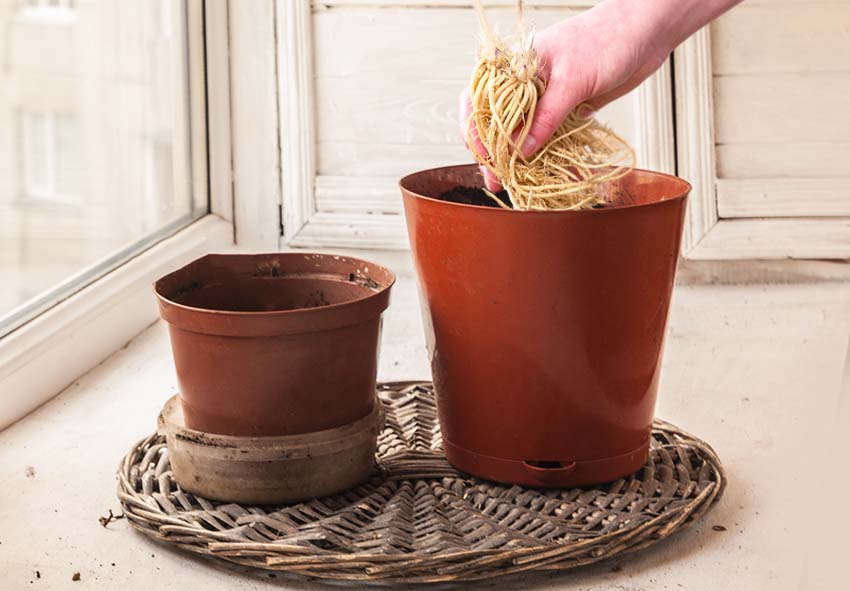
Planting Astilbe involves careful consideration of soil type, light conditions, and timing. Proper planting techniques are crucial to ensure these shade-loving perennials establish well and flourish in your garden.
Choosing the Right Varieties
When selecting Astilbe varieties for your garden, consider the following factors to ensure they thrive in your specific conditions:
- Light Requirements: Choose varieties that match the light levels in your garden—some prefer full shade, while others tolerate partial shade.
- Height: Select varieties based on their mature height to suit your garden’s layout and design preferences.
- Flower Color: Astilbes come in a range of colors, including pink, red, white, and lavender. Choose colors that complement your garden’s color scheme.
- Soil Preference: Check the soil type and moisture levels in your garden. Some varieties prefer moist, well-drained soil, while others can tolerate drier conditions.
- Climate Suitability: Consider your climate zone. Certain Astilbe varieties are more tolerant of cold winters or hot summers, so choose accordingly to ensure year-round success.
By choosing Astilbe varieties that align with these criteria, you can create a garden filled with beautiful, healthy plants that thrive in their environment.
When and Where to Plant Astilbe
Astilbe should be planted in spring or fall when temperatures are cooler. Choose a location with partial to full shade and well-drained, consistently moist soil. Avoid areas with intense afternoon sun, as it can scorch the delicate foliage.
Soil and Light Requirements
Astilbe prefers rich, organic soil with a slightly acidic to neutral pH (6.0-7.0). Ensure the soil remains consistently moist but not waterlogged. These plants thrive in shady to partially shaded areas, although some varieties can tolerate more sun if the soil is kept moist.
Step-by-Step Planting Instructions
Following step-by-step planting instructions is key to successfully establishing Astilbe in your garden. These guidelines ensure your Astilbe gets off to a strong start:
- Dig a hole twice as wide and just as deep as the root ball.
- Place the Astilbe in the hole with the crown slightly above the soil surface.
- Fill in with soil, firming it gently around the roots.
- Water thoroughly to settle the soil and eliminate air pockets.
Growing Astilbe
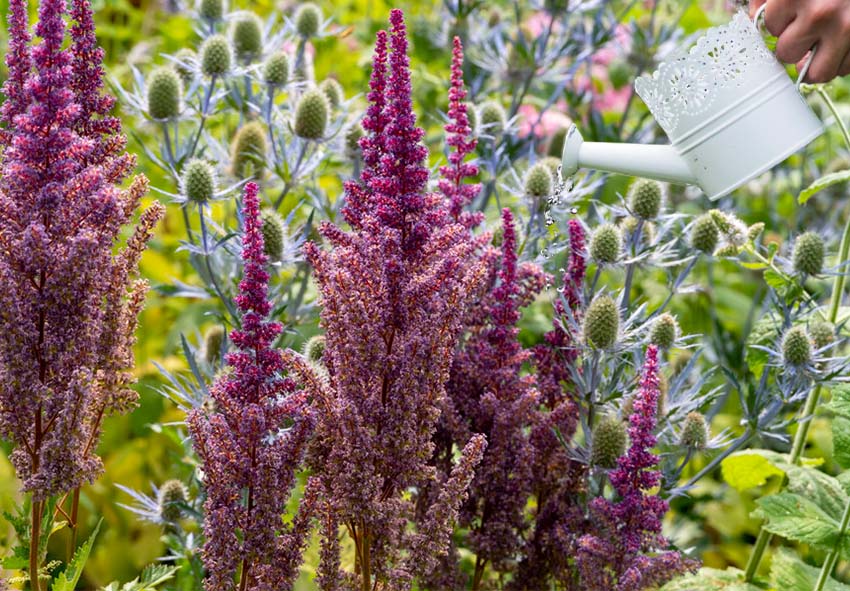
To cultivate healthy and vibrant Astilbe plants, understanding their specific watering needs and fertilization requirements throughout the growing season is essential. Providing optimal care promotes vigorous growth and abundant blooms.
Watering Needs
Astilbe requires regular watering, especially during dry spells. Ensure the soil is consistently moist but not soggy, as both overwatering and underwatering can harm the plant. Water deeply to encourage robust root growth, particularly during the plant’s active growing season in spring and summer.
Fertilizing Astilbe
Feed Astilbe with a balanced, slow-release fertilizer in early spring. A second application after flowering can help promote strong growth and prepare the plant for the next blooming season.
Mulching and Soil Maintenance
Proper mulching and soil maintenance are crucial for the health and vigor of Astilbe plants. Here are some considerations:
- Mulching Benefits: Apply a layer of organic mulch around Astilbe plants to retain moisture, suppress weeds, and regulate soil temperature.
- Mulch Types: Use materials like shredded bark, wood chips, or compost. Ensure the mulch is applied evenly around the base of the plants without touching the stems.
- Depth: Maintain a mulch layer of about 2-3 inches deep to provide adequate insulation and moisture retention.
- Soil Health: Astilbes prefer moist, well-drained soil with organic matter. Amend the soil with compost or organic fertilizer to improve its structure and nutrient content.
- pH Levels: Astilbes thrive in slightly acidic soil with a pH range of 5.5 to 6.5. Test the soil pH periodically and adjust if necessary using appropriate amendments.
Proper mulching and soil maintenance will ensure that your Astilbe plants have the optimal growing conditions for healthy growth and abundant blooms.
Pruning and Deadheading
Remove spent flowers to encourage continued blooming and tidy the plant. Deadheading prevents the plant from wasting energy on seed production and directs it toward developing new blooms and maintaining overall health. Regularly check your Astilbe for faded flowers and remove them using clean, sharp scissors or pruning shears.
Caring for Astilbe
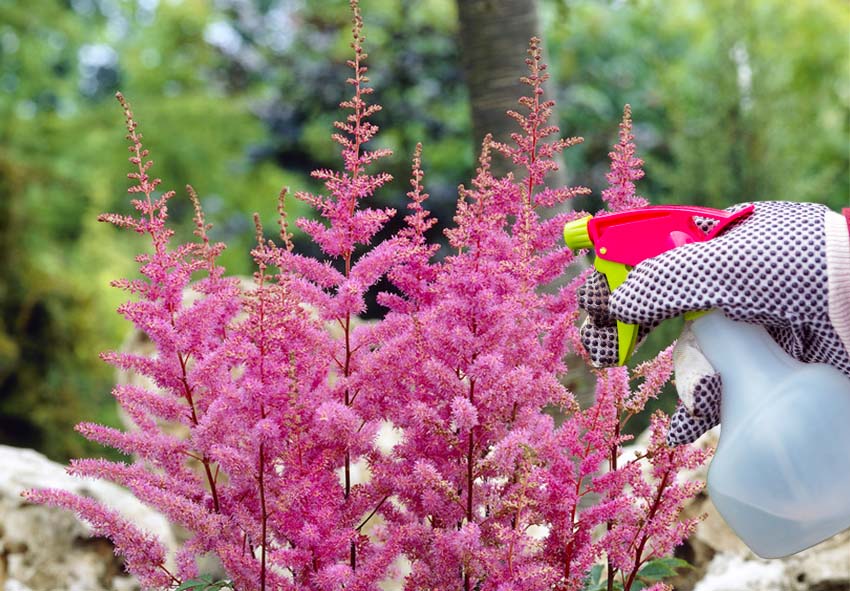
Effective care for Astilbe involves more than watering and fertilizing. From pest management to seasonal maintenance, proper care practices ensure long-term health and beauty for these beloved shade garden plants.
Pest and Disease Management
Astilbe is generally resistant to pests and diseases, but it can occasionally be affected by powdery mildew, root rot, or spider mites. Ensure good air circulation and avoid overhead watering to minimize these issues.
Dividing and Transplanting Astilbe
Divide Astilbe every 3-4 years in spring or fall to rejuvenate the plants and promote better blooming. Gently lift the clump, separate the roots, and replant the divisions at the same depth.
Care Throughout the Seasons
Caring for Astilbe is a year-round endeavor, from early spring preparations to winter protection. These seasonal care tips keep your plants healthy and thriving in every season:
- Spring Care
Begin by cleaning up winter debris and applying a fresh layer of mulch. Fertilize and water regularly to support new growth.
- Summer Care
Maintain consistent watering and mulch to keep the roots cool. Deadhead spent blooms to encourage continuous flowering.
- Fall Care
Cut back the foliage after the first frost and apply a thick layer of mulch to insulate the roots.
- Winter Care
Protect Astilbe with additional mulch if necessary, and ensure they remain undisturbed until spring.
Enhancing Your Garden with Astilbe
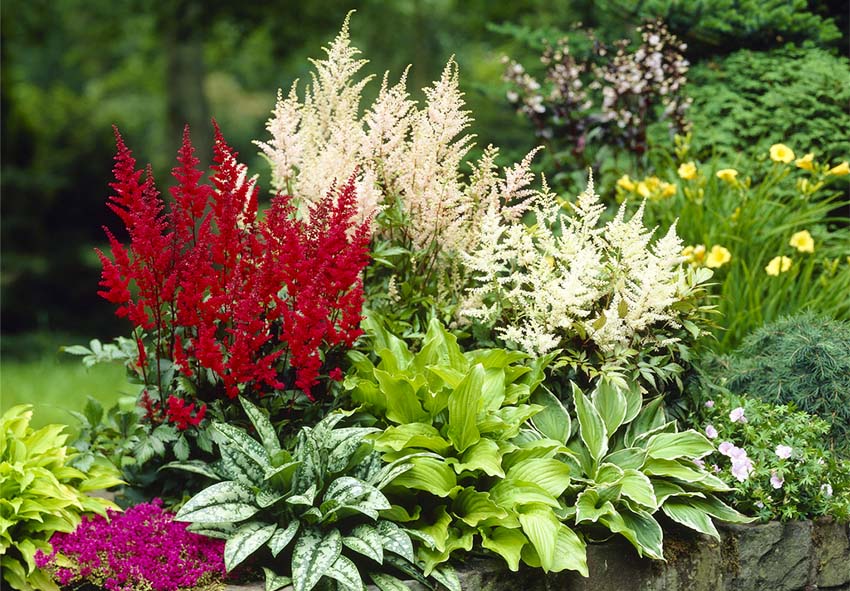
Astilbe’s versatility extends beyond its ornamental value; it enhances garden aesthetics and complements various garden styles. Discover how to integrate Astilbe into your garden design, creating visually appealing landscapes with its vibrant blooms and lush greenery.
Design Ideas
You can find a perfect usage for Astilbe in garden designs, from woodland gardens to shaded borders. Their colorful plumes create stunning visual contrasts against dark green foliage. In a woodland garden, Astilbe pairs beautifully with ferns and hostas, adding splashes of pink, red, and white amidst the lush greenery. Along shaded borders, Astilbe can be planted en masse to create a vibrant, continuous bloom that lasts from late spring to summer.
Companion Planting with Astilbe
Astilbes can complement other plants in your garden while benefiting from their proximity. Here are some excellent companion plants for Astilbe:
- Hostas: These shade-loving plants pair well with Astilbes, creating a lush and vibrant foliage contrast.
- Ferns: Ferns thrive in similar moist, shady conditions as Astilbes, making them ideal companions for a woodland garden setting.
- Heucheras: Known for their colorful foliage, Heucheras add visual interest when planted alongside Astilbes, especially in partial shade.
- Bleeding Hearts (Dicentra): Both Astilbes and Bleeding Hearts prefer moist, well-drained soil and partial shade, making them compatible companions.
- Japanese Painted Ferns: These ferns offer delicate fronds and striking colors that complement the feathery plumes of Astilbes.
Choosing compatible companion plants ensures a harmonious and visually appealing garden environment while meeting the growing requirements of Astilbes.
Using Astilbe in Floral Arrangements
Astilbe’s feathery blooms add texture and interest to cut flower arrangements. Cut stems in the morning and place them in water immediately for the best results.
Conclusion
Astilbe is a versatile and beautiful addition to any garden, providing color and texture in shady areas. By following the planting, growing, and care tips outlined in this guide, you can enjoy healthy, vibrant Astilbe plants throughout the seasons.
Frequently Asked Questions (FAQs) about Astilbe
1. When is the best time to plant Astilbe?
The best time to plant Astilbe is in the spring or early fall. These seasons provide moderate temperatures, allowing the plants to establish roots before the heat of summer or the cold of winter.
2. Can I order Holland Astilbe from your online store?
Yes, you can! Our online store Dutch-bulbs.com offers a wide selection of Astilbe plants, including different varieties and colors. We take pride in providing top-quality plants that are carefully cultivated and shipped with care to ensure they reach you in perfect condition.
3. How often should I water Astilbe?
Astilbe requires regular watering, especially during dry spells. Keep the soil consistently moist but not waterlogged. Mulching around the base of the plants can help retain moisture and keep the roots cool.
4. What type of soil is best for growing Astilbe?
Astilbe thrives in well-draining, rich, and loamy soil with a slightly acidic to neutral pH. Amending the soil with organic matter like compost can improve its texture and fertility. This provides the essential nutrients and optimal conditions that Astilbe needs for vigorous growth.
5. Can Astilbe grow in full sun?
Astilbe prefers partial to full shade, especially in hotter climates. While they can tolerate some morning sun, too much direct sunlight can scorch the leaves and reduce flowering. Providing shade during the hottest part of the day will help Astilbe thrive and produce vibrant blooms.
Published: 12.07.2024
